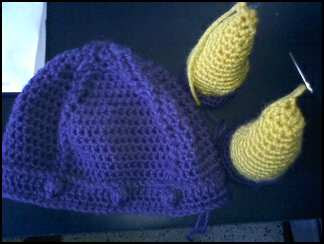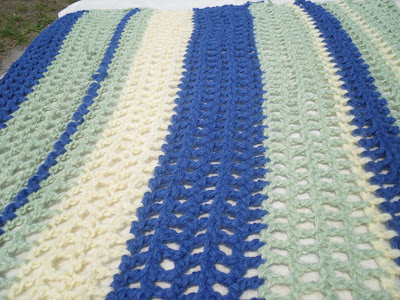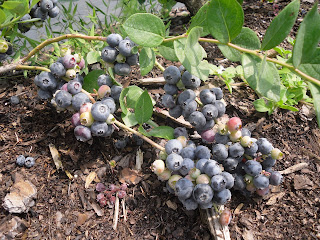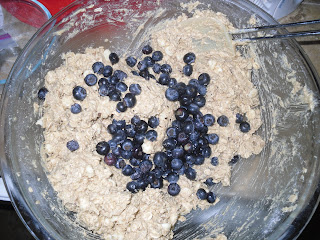There aren’t too many people who look at a glass of milk and think that it would make a great sweater. Thankfully, somebody did, and with that idea milk fiber was born!
You might have heard about milk fiber before; it has recently become a popular fiber for spinners, dyers, and knitters to use and experiment with. While milk fiber has been around for quite some time - milk protein was already being used in paint in ancient Egypt, the fiber itself was invented in the 1930s and used throughout WWII as a wool substitute - it is currently enjoying a renaissance, with good reason. Milk fiber is soft, gorgeous to look at and use, and a great way to add some variety (though few vitamins) to your crafting life. When hearing about milk fiber for the first time, many people have quite a few questions about how such a fiber is made or what it is like to use. I certainly did, and the
flurry of activity in the forums suggests that I am not alone! The process by which milk goes from being a tasty comestible to a fiber that can be spun, knit, and worn is a fascinating one.
Unlike wool, cotton, and many animal fibers, which can be spun into yarn after only minimal processing, the journey from milk to milk fiber requires several steps. The process starts with real, liquid milk, which is first dehydrated to remove the moisture and skimmed to remove the fat. What is left is milk casein, the protein that you consume whenever you drink milk or take a whey protein supplement. This protein is mixed with acrylonitrile, the same chemical that is the base for acrylic yarn, and the resulting solution is extruded through a device called a spinneret in order to make fibers. The end product is no longer edible, but it makes great yarn, doesn’t spoil in warm weather, and can be safely washed without dissolving.
This photo of unspun milk fiber was taken by
polyartgirl, used with permission. Note the beautiful sheen- it’s one of the characteristics of milk fiber.

Once it has been made up, milk fiber has an incredibly soft hand, pleasant sheen, and wonderful drape. It has a fairly long staple length, which means that it doesn’t pill as easily as wool does, and it is very strong. The fiber does lack memory, so it’s best to use it for projects where its drape and lack of memory will be beneficial or to use it in blends with other fibers, like wool. The fiber is also very smooth, so is unlikely to be scratchy like wool and other protein fibers can be, and its pH is around 6.8, which is the same as human skin, making it great for people with sensitive skin. One of the concerns about early incarnations of milk fiber was that it was prone to mildew, but now the manufacturing process introduces some zinc into the mix, so the fiber has some antibacterial properties.
Why should you consider working with milk fiber? Milk fiber has the luster and drape of silk, is warm and hygroscopic like wool, and blends beautifully with other fibers. Many people enjoy spinning with milk fiber; it’s a little slippery and getting the right twist might take some practice, but the results are wonderful and it’s well worth the effort. Try blending it with other fibers to see the results! Milk fiber is also a dream to dye. It takes acid, reactive, and cationic dyes well, and it is easy to get amazing jewel tones that you are sure to love. Knitted and crocheted items made from milk fiber are beautiful because of their gloss and drape, and because they are strong, not terribly prone to pilling, and bacteriostatic, they are sure to last for a long time.
Some beautiful milk fiber yarn, spun, acid dyed, and photographed by by
CarissaMarie, used with permission.

Although milk doesn’t have its own fiber tag on the yarns page, a
quick search for “milk” turns up a variety of yarns that showcase milk fiber’s versatility and the ease with which it can be blended with other fibers. If you spin, there are many ways to get your daily dose. If you don’t spin, never fear; in addition to the many commercial milk blends, there are also several hand-spun and commercial pure milk yarns that are on the market.
The main hub of milk fiber-centered activity on ravelry is the group
Got Milk?, where fiberists discuss and show off their milk-related spinning, knitting, and crocheting. Spinners might want to check out
Beginning Spinners and
Spinner Central, which both have several threads full of advice for how best to spin this wonderful fiber. If you are interested in dyeing milk fiber,
Love to Dye has several helpful discussions about techniques as well as beautiful pictures of finished products.
Through innovation and the marvels of modern technology, fiber is now being made from all kinds of sources that would have been unimaginable not very long ago. Milk fiber is
fun, gorgeous, and generally really cool; go out there and try some!


















































